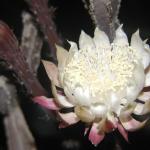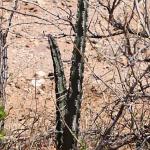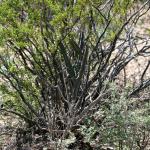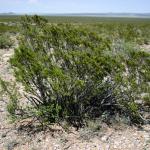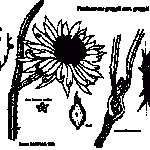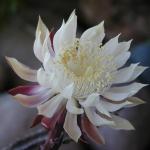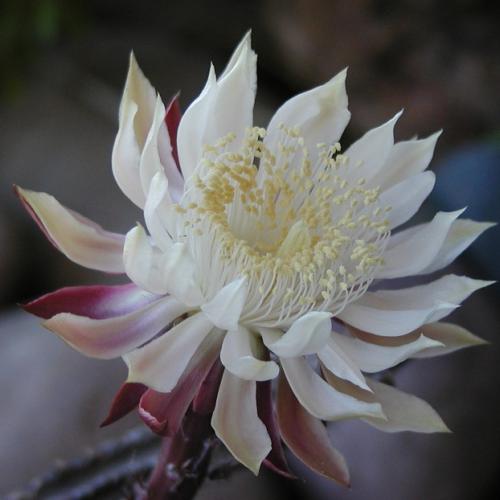Peniocereus greggii var. greggii (Night-Blooming Cereus)
CEREUS GREGGII ENGELMANN VAR. GREGGII; CEREUS GREGGII ENGELMANN VAR. CISMONTANUS ENGELMANN
| USFWS | State of NM | USFS | BLM | Navajo Nation | State Rank | Global Rank | R-E-D Code | NMRPTC Status | Strategy Status |
|---|---|---|---|---|---|---|---|---|---|
| E | SEN | S3 | G3G4T3 | 1-3-1 | R | SS |
| Overall Conservation Status | Documented Threats | Actions Needed |
|---|---|---|
| UNDER CONSERVED | Collection. Lagomorphs. Cactus borers. |
population trend monitoring, threat imapcts |
Root large, fleshy, round at the top, tapering; stems 2 m long, pale gray-green, slender, 1-2.5 cm in diameter, strongly angled by the 4-6 low, broad ribs; areoles narrowly oval about 4 mm long, white to gray woolly, bearing approximately 12 gray to black spines; flowers nocturnal, fragrant, white, about 5-10 cm in diameter and 15-20 cm long, the hypanthium long and slender; fruit with small, deciduous blackish spines, ripening to red; seeds about 2.5-3 mm long, tubercled, black, with basal hilum. Flowers early May to early June.
The Sonoran Peniocereus greggii var. transmontanus may occur in Hidalgo County, New Mexico. It has smaller areoles (1.5 mm), longer spines on ovary and fruit, and larger flower.
New Mexico, Dona Ana, Grant, Hidalgo, and Luna counties; Texas, mostly in the Big Bend Region; Mexico, Chihuahua.
Mostly in sandy to silty gravelly soils in gently broken to level terrain in desert grassland or Chihuahuan desert scrub. Typically found growing up through and supported by shrubs, especially Larrea divaricata and Prosopis glandulosa.
A popular plant with religious, medicinal, and ornamental uses.
Many populations have been extirpated from New Mexico. Private and commercial collectors have eliminated entire populations of this species from its natural habitat. Agricultural uses of land and development have had large impacts on populations as well. This is a vanishing plant throughout its range. Ironically, it is easily propagated by short stem cuttings and from seed. Low fruit set has been linked to the disappearance of the primary pollinator, hawkmoths, from the habitat, likely in response to agricultural pesticide use and habitat fragmentation. Landscape scale herbicide use to control native woody vegetation, including mesquite and creosote, likely impact plants and their pollinators.
*New Mexico Native Plants Protection Advisory Committee. 1984. A handbook of rare and endemic plants of New Mexico. University of New Mexico Press, Albuquerque.
*Benson, L. 1982. The cacti of the United States and Canada. Stanford University Press, Stanford, California.
*Weniger, D. 1970. Cacti of the Southwest. University of Texas Press, Austin.
*Schulz, E.D. and R. Runyon. 1930. Texas cacti. Texas Academy of Science, San Antonio.
For distribution maps and more information, visit Natural Heritage New Mexico

